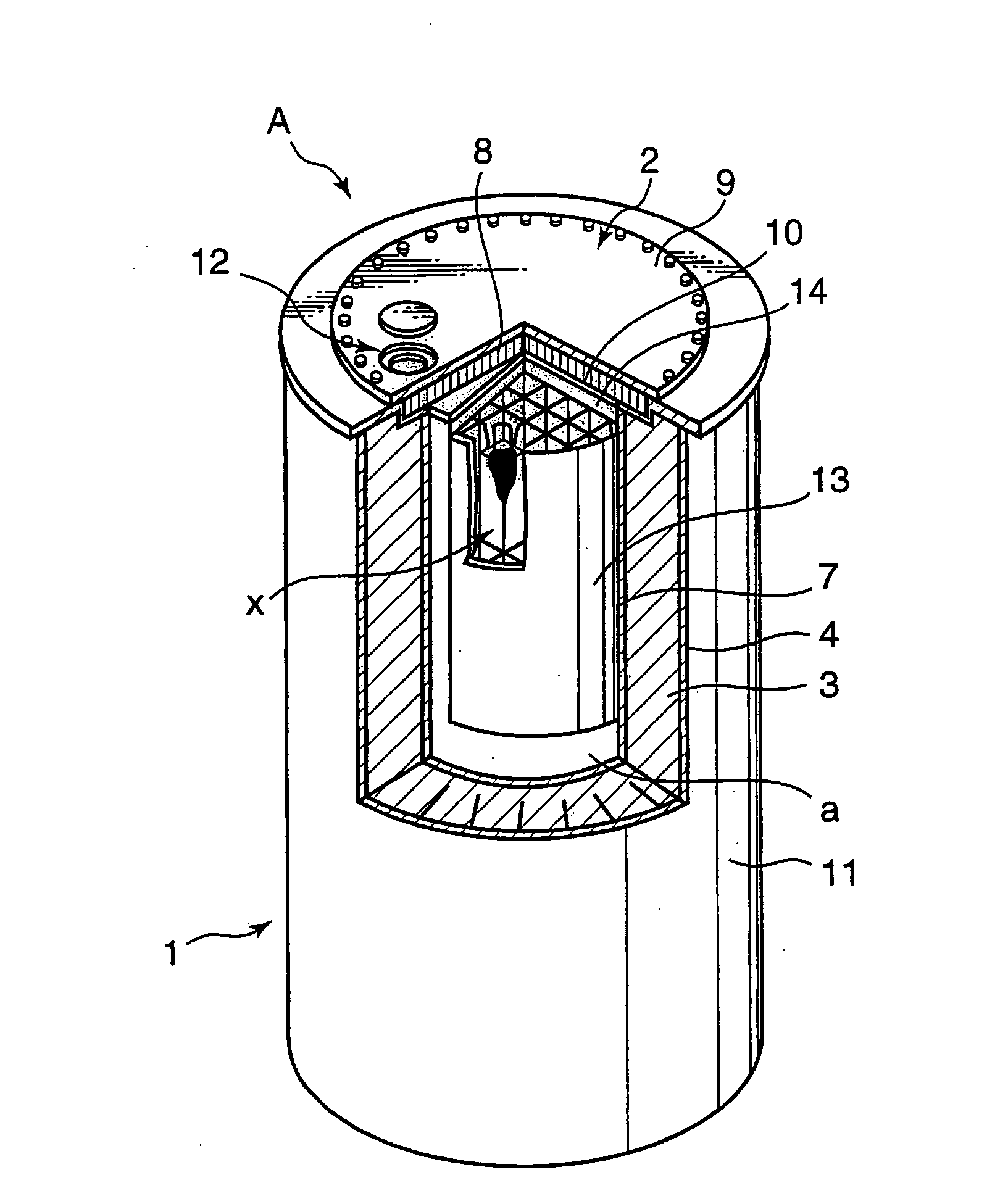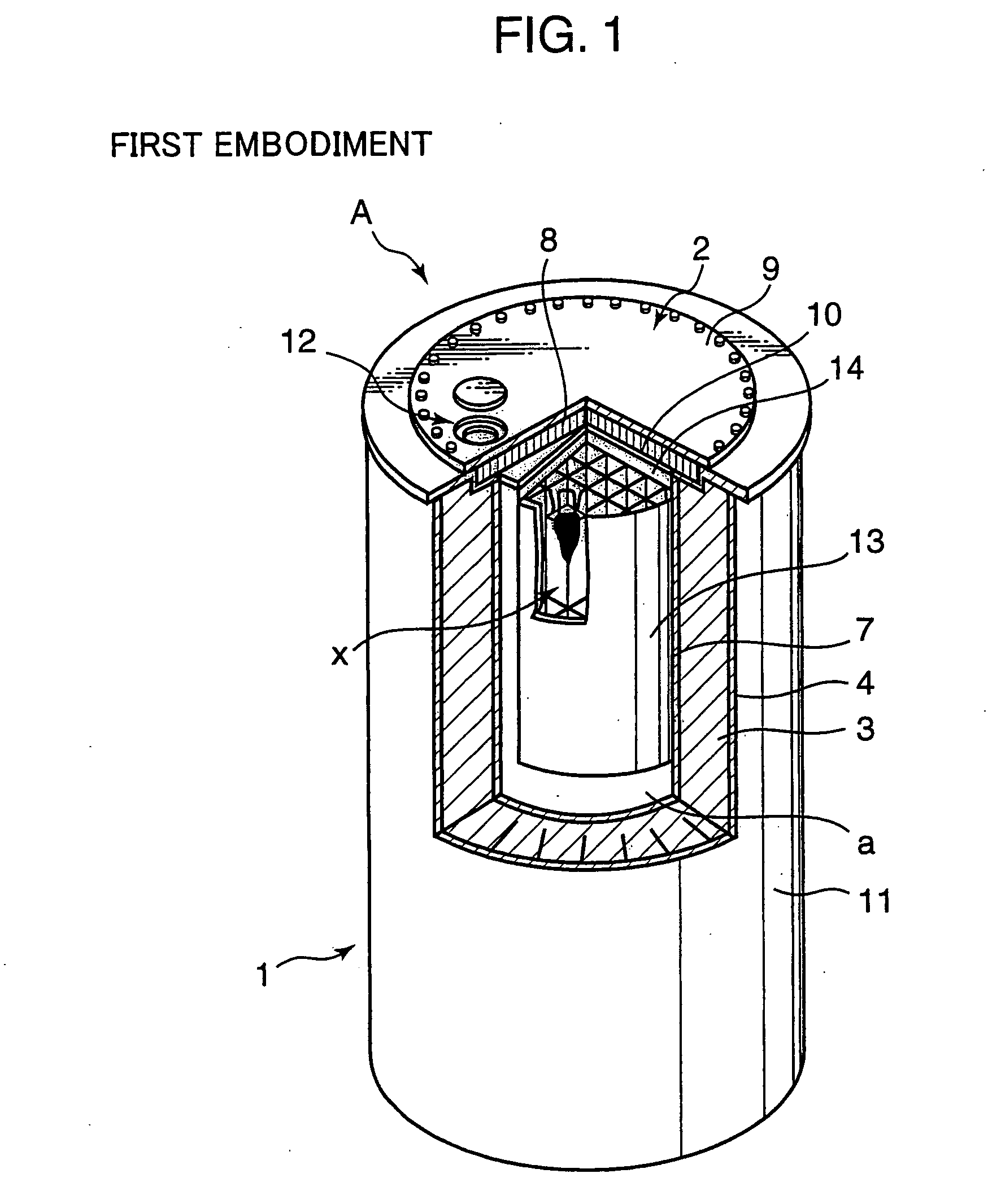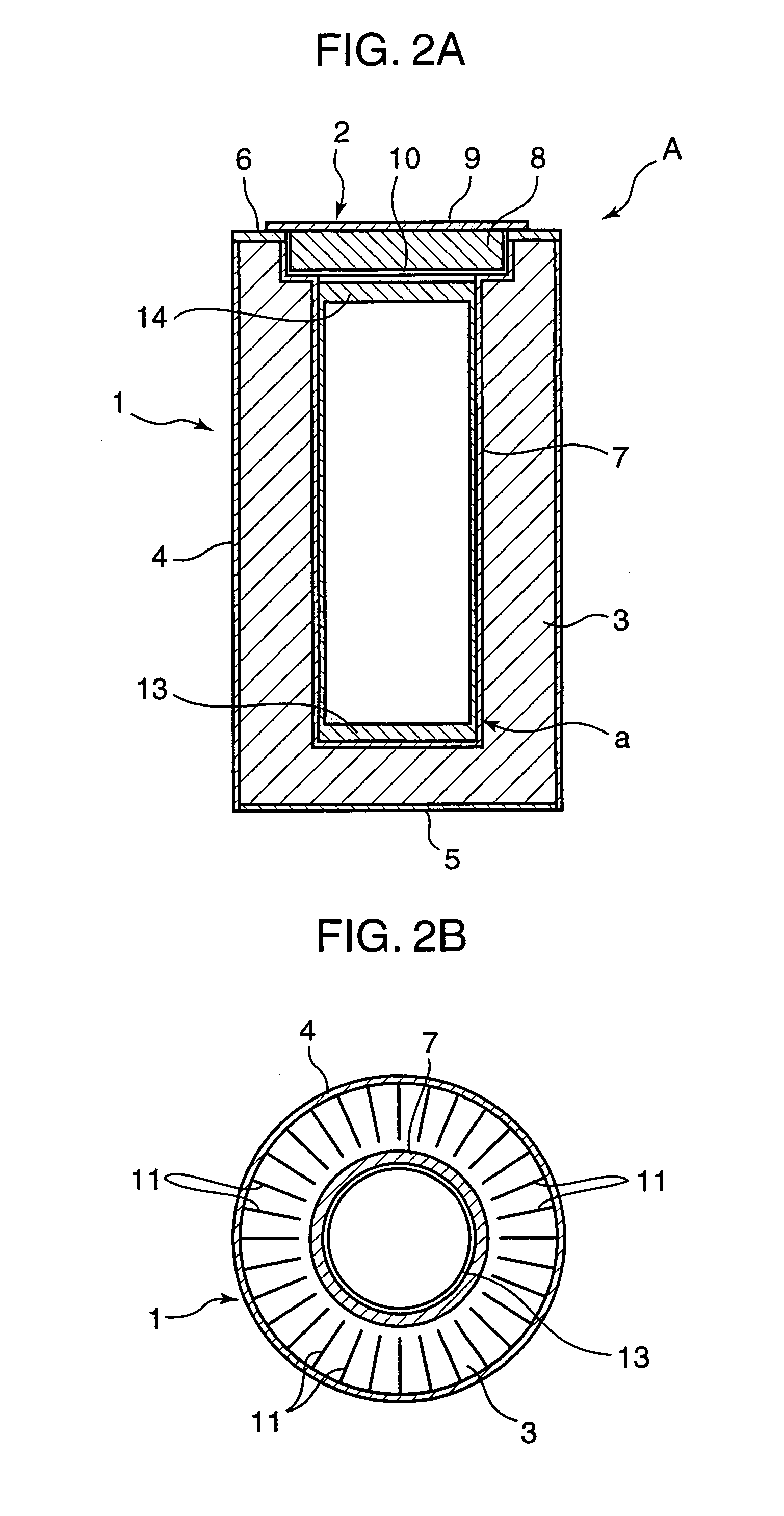Concrete cask and method for manufacturing thereof
a technology of concrete casks and casks, which is applied in the field of concrete casks, can solve the problems of stress corrosion cracking, concrete cask corrosion, and unavoidable introduction of sea salt particles from outside air into the concrete cask,
- Summary
- Abstract
- Description
- Claims
- Application Information
AI Technical Summary
Benefits of technology
Problems solved by technology
Method used
Image
Examples
first embodiment
[0036] The concrete cask A of the first embodiment shown in FIG. 1 and FIG. 2 is composed of a tubular container body 1 open at both ends. A canister (a) is provided inside the concrete cask A.
[0037] The container body 1 has a structure in which a concrete container 3 is covered with an outer shell 4 made from carbon steel, a bottom cover 5 made from carbon steel, a thick flange made from carbon steel, and an inner shell 7 made from carbon steel. An accommodation portion for accommodating the canister (a) is constructed inside the inner shell 7 (inside the container body 1). A lid 2 has a structure in which a concrete lid member 8 is covered with a thick upper lid 9 made from carbon steel and a lower cover 10 made from carbon steel. Multiple heat transfer fins 11 made from copper, carbon steel, or aluminum alloy are embedded and installed in the container 3 so as to be connected to the inner wall of the outer shell 4, as shown in FIG. 1 or FIG. 2B.
[0038] The heat transfer fins are ...
third embodiment
[0048] In the third embodiment illustrated by a lateral sectional view in FIG. 4, the end portions of the heat transfer fins 18 at the side of the outer shell 4 are connected to the inner wall of the outer shell 4, whereas the end portions at the side of the inner shell 7 (ends that form a separation portion with respect to the inner shell 7) are bent at an almost right angle along the appropriate width to obtain an L-like shape. As a result, the portions that were bent (bent portions) form opposite surfaces that face the outer wall of the inner surface 7 at an appropriate distance therefrom (separation portion).
fourth embodiment
[0049] In the fourth embodiment illustrated by a lateral sectional view in FIG. 5, the end portions of the heat transfer fins 18′ at the side of the inner shell 7 are connected to the outer wall of the inner shell 7, whereas the end portions at the side of the outer shell 4 (ends that form a separation portion with respect to the outer shell 4) are bent at an almost right angle along the appropriate width to obtain an L-like shape. As a result, the portions that were bent (bent portions) form opposite surfaces that face the inner wall of the outer shell 4 at an appropriate distance therefrom (separation portion).
[0050] In the above-described third and fourth embodiments, the heat transfer fins 18, 18′ have such bent portions. Therefore, a large surface area of the surfaces (opposite surfaces) of the heat transfer fins 18, 18′ that face the inner shell 7 or outer shell 4 can be ensured. As a result, heat transfer can be enhanced and a concrete cask A with excellent cooling capacity c...
PUM
 Login to View More
Login to View More Abstract
Description
Claims
Application Information
 Login to View More
Login to View More - R&D
- Intellectual Property
- Life Sciences
- Materials
- Tech Scout
- Unparalleled Data Quality
- Higher Quality Content
- 60% Fewer Hallucinations
Browse by: Latest US Patents, China's latest patents, Technical Efficacy Thesaurus, Application Domain, Technology Topic, Popular Technical Reports.
© 2025 PatSnap. All rights reserved.Legal|Privacy policy|Modern Slavery Act Transparency Statement|Sitemap|About US| Contact US: help@patsnap.com



